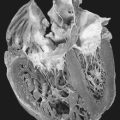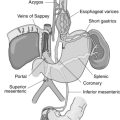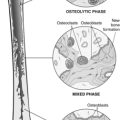85. von Willebrand Disease
Definition
von Willebrand disease (vWD) is a bleeding disorder resulting from an autosomally inherited defect that causes a deficiency, or absence, of von Willebrand factor. This disease is associated with impaired platelet adhesion and epistaxis, as well as increased blood loss from trauma, surgery, menorrhagia, or postpartum bleeding.
Incidence
The incidence of this clinically significant disease is estimated at approximately 125:1,000,000. The incidence of severe vWD is estimated at approximately 0.5:1,000,000 to 5:1,000,000. There are no observed racial or gender predilections.
Etiology
vWD is an inherited defect in the von Willebrand factor gene, which is located on the short arm of chromosome 12. It is divided into three major types: Type I: partial quantitative deficiency; Type II: qualitative deficiency; and Type III: total deficiency. The types are differentiated by molecular mechanisms resulting from differences in the von Willebrand factor gene mutation and its expression.
Signs and Symptoms
• Delayed postsurgical bleeding
• Easy bruising
• Epistaxis
• Excessive menstrual bleeding
• Hematoma from relatively innocuous contact/“trauma”
• Oral cavity bleeding
• Prolonged bleeding from minor trauma
• Severe hemorrhage after major surgery
Medical Management
There are two treatment options for the patient with vWD: desmopressin and/or transfusion therapy. The effectiveness of desmopressin depends on the type of vWD. For the patient with Type I, desmopressin is most effective. Desmopressin may triple or quadruple the plasma concentration of von Willebrand factor. For the patient with Type II, response to desmopressin is variable, depending on the subtype. Subtype IIA may have a strong but transient response with return to baseline within 4 hours. The patient with Subtype IIB should not receive trial administrations of desmopressin because of a predisposition to thrombocytopenia and potential thrombotic complications. For the patient with Type III, desmopressin has no effect because the patient is virtually devoid of von Willebrand factor. Platelet transfusion may be useful for a patient with vWD who is refractory to other therapies.
Cryoprecipitate and/or fresh frozen plasma may be used because each contains functional von Willebrand factor. However, their use is discouraged because both can result in transmission of viral disease from the donor. Achieving satisfactory plasma levels of von Willebrand factor with fresh frozen plasma transfusion requires a large volume to be infused, which is an additional reason why use of fresh frozen plasma is discouraged.
Complications
• Postoperative hemorrhage
• Transmission of viral disease via transfusion of cryoprecipitate or fresh frozen plasma, such as HIV/AIDS and hepatitis
Anesthesia Implications
The factor VIII concentration and bleeding times should be determined the week preceding the proposed surgery. Immediately before surgery, 1 to 2 hours a prophylactic infusion of desmopressin, 0.3 mcg/kg, should be administered. If the factor VIII and bleeding time baseline measurements are abnormal, they should be repeated after the desmopressin has been given. Desmopressin infusions should be continued daily until the surgical wound is healed. Factor VIII and bleeding times should also continue to be assessed until the wound is healed.
Because of the great potential for bleeding, unnecessary needle sticks should be avoided if at all possible. Attempts at intravenous access, intra-arterial pressure monitoring, or arterial blood gas analysis must be undertaken with great caution. Unsuccessful attempts require the anesthetist to hold pressure at the puncture site for a long time to minimize the bleeding and hematoma formation. Also as a result of the greater potential for bleeding and hematoma formation, regional anesthesia is relatively contraindicated. However, with appropriate prophylactic treatment using desmopressin, regional anesthesia can be undertaken with caution.







